In the heart of the Philippines, the Bicol region unfolds like a vibrant tapestry woven from the threads of natural wonders, rich culture, and culinary heat. Home to the iconic Mayon Volcano, pristine beaches, and the warm, spirited Bicolanos, this region offers a journey of discovery that ignites the senses and warms the soul. From the fiery kick of its famous dishes to the soothing embrace of its natural hot springs, Bicol is a land of contrasts, where the elements are always in a mesmerizing dance. Let’s embark on an exploration of Bicol, a region where every moment is infused with adventure and every bite tells a story of its volcanic heartland.
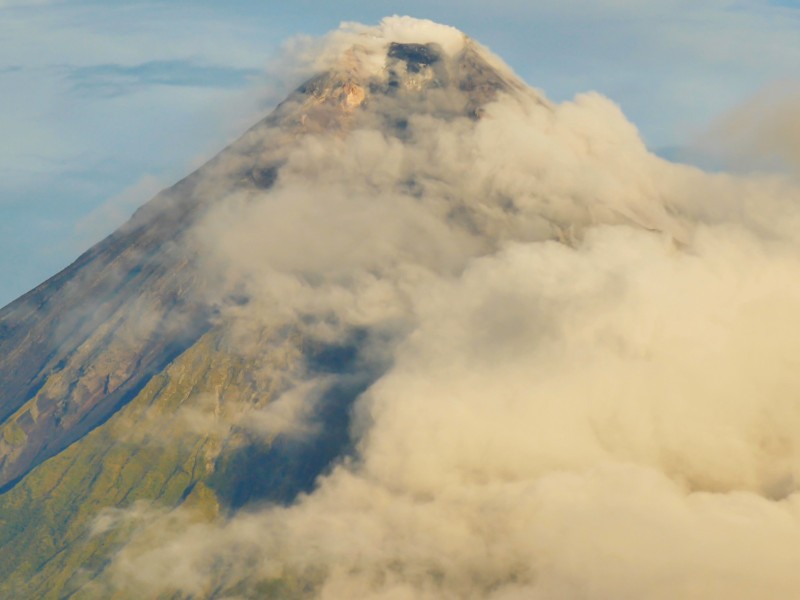
Majestic Landscapes
Where Fire Meets Beauty
The majestic Mayon Volcano, with its perfect cone shape, stands as a testament to the region’s dynamic relationship with the earth’s power. Its slopes and surrounding landscapes offer a playground for adventurers and nature lovers, from climbing and ATV tours to tranquil spots perfect for reflection. But Mayon is just the beginning. The region’s rugged terrains, hidden waterfalls, and verdant hills call out to those who seek the beauty of the untamed.
Aquatic Paradises
Embraced by Waters
Bicol’s waters are as inviting as its lands are lush. The Caramoan Islands, with their crystal-clear waters and untouched beaches, offer a slice of paradise for sun-seekers and snorkelers. Meanwhile, the whale sharks of Donsol provide an unforgettable experience, allowing visitors a gentle encounter with the sea’s giants. Whether it’s riding the waves of Gubat or kayaking through the serene waters of Buhi Lake, Bicol’s aquatic adventures are endless.
Culinary Adventures
A Taste of Fire
Bicol’s cuisine is a bold declaration of love for spice, most notably embodied in the Bicol Express, a dish that marries the region’s abundant chilies with coconut milk in a harmony of flavors. Yet, the culinary journey extends beyond the heat. The region’s use of local ingredients, from the freshest seafood to the heartiest root crops, tells a story of a people deeply connected to their land and sea.
Cultural Heritage
The Soul of Bicol
The spirit of Bicol is best experienced through its festivals, where the streets burst into color and life, celebrating everything from religious devotion to local harvests. The Peñafrancia Festival in Naga City, in honor of the miraculous Our Lady of Peñafrancia, is a profound display of faith and community. Each town, each village in Bicol, has its story, often shared through the smiles of its people, the rhythms of its music, and the strokes of its artists.
Bicol invites us to immerse, to taste, to celebrate.
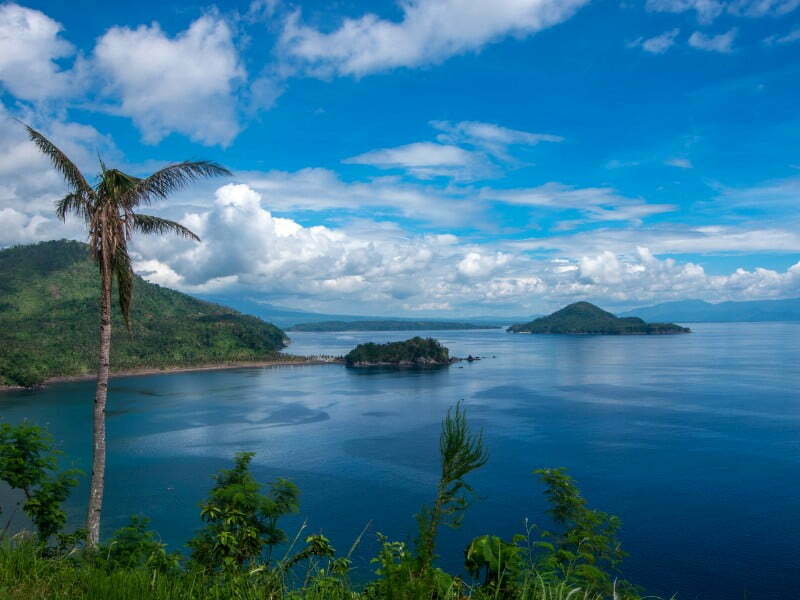
Bicol Regional Guide: A Brief History Of Bicol, Philippines
This land, cradled by mountains and kissed by the sea, has witnessed centuries of stories, from ancient folklore to pivotal moments in Philippine history. Its past is a tapestry of resilience, culture, and the unbreakable spirit of the Bicolanos. Let’s journey through the corridors of time to uncover the layers that make Bicol a region where every stone, river, and volcano has a story to tell.
Pre-Colonial Richness
A Land of Ancient Societies
Long before the Spanish galleons arrived on its shores, Bicol was a thriving expanse of barangays (villages) governed by local chieftains known as “datus.” It was a society rich in trade, agriculture, and artisan crafts, with a culture deeply rooted in the harmonious relationship between its people and the environment. The Bicolanos’ reverence for nature is encapsulated in their legends, such as that of Daragang Magayon (Beautiful Maiden), a tale that poetically narrates the formation of the Mayon Volcano.
The Spanish Era
The Cross and The Sword
The arrival of Spanish conquistadors in the 16th century marked the beginning of a new chapter in Bicol’s history. The region became a frontier of Christian missionary efforts, leading to the establishment of some of the Philippines’ oldest churches, such as the Naga Metropolitan Cathedral and the Daraga Church. This era was also marked by resistance, with local heroes like Francisco Dagohoy leading revolts against colonial rule, illustrating the Bicolanos’ enduring spirit of independence.
The American and Japanese Occupation
Times of Turmoil and Resilience
The American colonization and subsequent Japanese occupation brought significant changes to Bicol’s social fabric and economy. The region’s strategic location made it a battleground for guerilla warfare during World War II, a testament to the courage of its people. Post-war recovery was marked by the rebuilding of towns and a renewed focus on agriculture, setting the stage for Bicol’s modern era.
The Bicol of Today
A Mosaic of Progress and Tradition
In contemporary times, Bicol has emerged as a vibrant region that balances progress with the preservation of its cultural heritage. Its history is alive in the festivals that fill the streets with color, in the enduring faith of the Peñafrancia devotees, and in the resilient smile of every Bicolano. The region’s past challenges have only strengthened its community, making Bicol a place where tradition fuels the drive towards a bright future.
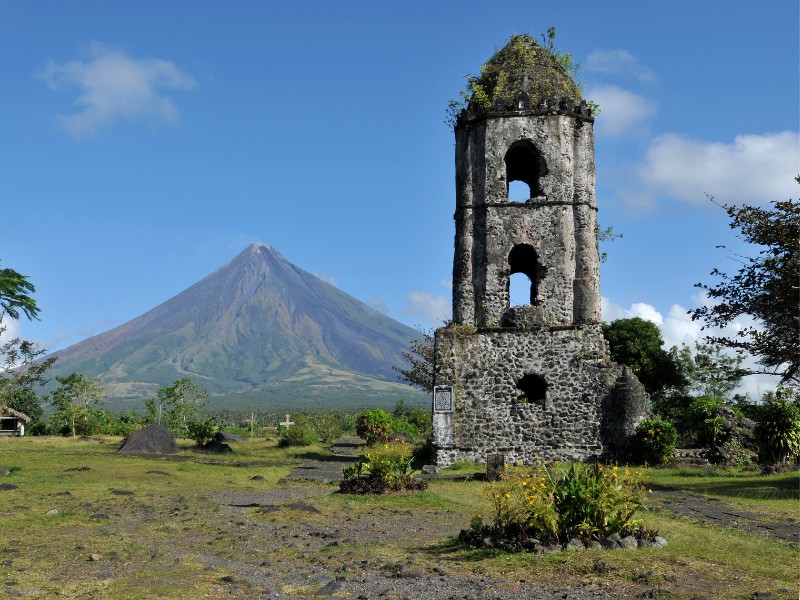
Bicol Top Attractions and Best Places to Visit in Philippines
Encompassing the narrow, most southern portion of the island of Luzon, the region of Bicol often gets passed over for the north of the island, or the isles of the Visayas. However, those determined to explore off the beaten track will have their curiosity rewarded, as this part of the Philippines is home to fantastic churches, paradise islands, and one of its most prominent volcanoes.
Start your sightseeing in Bicol Province by making a stop at the Basilica of Our Lady of Penafrancia. You might be confused why you are taking time out of your busy schedule to this church, as it appears to be rather modern (it was completed in 1982).
It is a noteworthy stop due to its long-time association with being a Marian (a sect of Christianity) pilgrimage site. On the grounds of this church, you will find a shrine which attracts devotees from across the Philippines and Asia. They come to see a unique image of the Virgin Mary, which was crafted in 1710. Within you’ll also find oil paintings of the Station of the Cross, so take time to check them out before heading on your way.
Those looking for older, aged Roman Catholic churches while travelling in Bicol will love what they find at Daraga Church. Completed by the Franciscans in 1772, this beauty shows the weathering one would expect for a structure which has withstood a tropical climate for centuries, yet its architectural touches remain easily identifiable and appreciated.
More Attractions
Built in the Churrigueresque style (a subset of Baroque architecture), its elaborate design will impress fans of European churches – suffice to say, if it was located there, it wouldn’t look out of place. Given its good looks and its superior views of the Mayon Volcano, try not to miss this attraction.
Not all churches in Bicol have survived the ages intact, as you will see during a tour of Cagsawa Ruins Park. Protecting what are the remains of a 16th-century Franciscan church, this park allows visitors to bear witness to the destructive power to the nearby Mayon Volcano.
An eruption by this feared mount in 1814 destroyed the town of Cagsawa and this place of worship for the 2nd and final time (Dutch pirates burned it to the ground in 1636), leaving behind a bell tower and several wrecked walls which are overgrown by jungle vines in the present day.
The gravity of this place and choice views of the Mayon Volcano make this place worth visiting despite an overabundance of souvenir shops and touts, so be brave and endure the onslaught on your way into the park.
Bicol Province is home to a number of fantastic islands, Caramoan included. Before catching a ferry to one of many islands off the coast, make time in your day to check out the Our Lady of Peace Grotto.
Defined by a gigantic statue of the Virgin Mary, it offers more than just an epic selfie opportunity – the views it offers of the oceans and isles offshore will make the sweaty climb to get the top worth the effort.
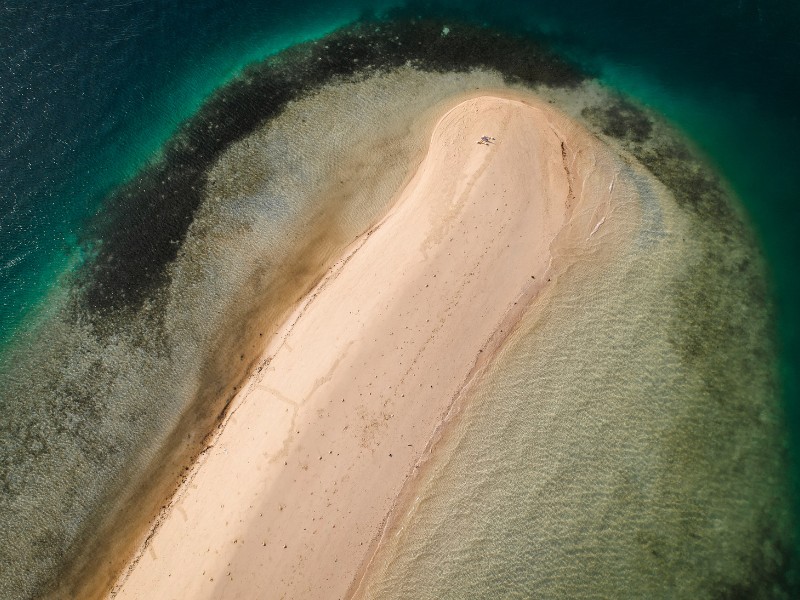
Other Cultural Attractions: Trip to Bicol, Philippines
Dominating the skyline through much of Bicol, the Mayon Volcano is easily this region’s most significant natural attraction. A destructive volcano which has laid waste to towns numerous times in its notorious past, climbing it can be a risky proposition at best (it last erupted in January 2018).
However, if threat levels are low enough, there are ATV tours which will take you as close as humanly possible to this smoking giant. Give it a go – you only live once!
Other Attractions
As mentioned earlier, there are a number of beautiful tropical islands one can visit while in Bicol. Make Matukad Island your first stop, as it boasts soft, white sand and an abundance of cliffs. Just offshore, there are a number of limestone karsts and sea stacks – while not as extensive as El Nido, it is a pleasant surprise for an island off the beaten track in the Philippines.
Lahos Island is another gem located off the coast of Bicol. Much smaller in stature than Matukad, it is known for a strip of sand which connects two husks of limestone overgrown by vegetation. Ideal as part of a day spent island hopping off this part of Bicol, its crystal clear water will make it tough for you leave this tranquil place.
Think you have to go to Dumaguete to go diving for whale sharks? Thankfully, the town of Donsol offers whale shark diving, negating the need to jump on a plane bound for the south of the Philippines.
As soon as you slip into the water off the coast of this town in Bicol, you’ll understand why so many travellers have this activity on their bucket list. Despite the fearsome name, whale sharks are gentle giants, making an encounter with them nothing short of magical.
source: Living La Vida Tagalog on YouTube
Top 22 Things To Do in Bicol, Philippines For Visitors
Here’s a detailed exploration of the top 22 things to do in Bicol:
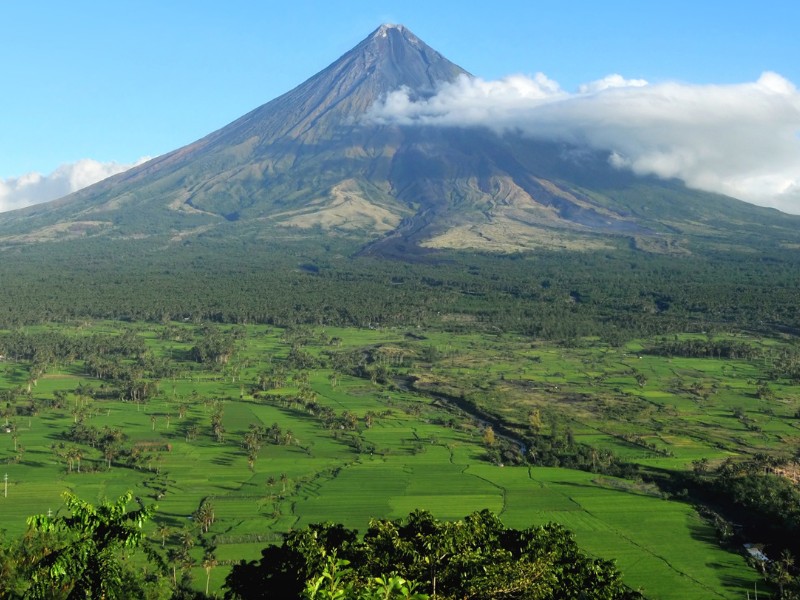

What To Eat and Drink in Bicol, Philippines
From iconic dishes that have put Bicol on the culinary map to lesser-known local delights, here’s a guide to the must-try foods and drinks in this spicy region of the Philippines.
Bicol Express
- A flagship dish of Bicolano cuisine, Bicol Express is a fiery concoction of pork, coconut milk, shrimp paste (bagoong), and a generous amount of green chili peppers. Named after the train service between Manila and Bicol, this dish perfectly embodies the region’s love for spice, delivering a creamy yet spicy explosion of flavors.
Laing
- Laing is a rich, spicy, and creamy dish made from dried taro leaves slowly cooked in coconut milk, chili, shrimp paste, and ginger. Often garnished with lemongrass, this dish can be found in every Bicolano home and is a testament to the simplicity and richness of the region’s culinary landscape.
Pinangat
- Similar to Laing but with a unique twist, Pinangat consists of taro leaves, coconut milk, and chili, wrapped around a filling of fish or shrimp, then steamed to perfection. The result is a harmonious blend of creamy, spicy, and umami flavors, encased in a tender leafy package.
Sili Ice Cream
- For those with a penchant for dessert with a kick, Sili (chili) ice cream is a must-try. This unusual dessert combines the creaminess of coconut milk ice cream with the fiery taste of Bicol’s native chilies, offering a sweet and spicy experience that is surprisingly refreshing.
Kinunot
- Kinunot is a flavorful dish made from shark meat or stingray, cooked in coconut milk with malunggay (moringa) leaves and chili. This dish showcases Bicol’s coastal bounty and its people’s ingenuity in creating dishes that are both sustainable and delicious.
Tinutungan na Manok
- A unique chicken dish, Tinutungan na Manok gets its distinctive flavor from chicken pieces that are grilled before being cooked in coconut milk, ginger, and lemongrass. The grilling imparts a smoky flavor to the dish, setting it apart from other coconut milk-based recipes.
Pili Nuts
- Native to Bicol, Pili nuts are a versatile ingredient used in various sweets and pastries. Whether candied, used in tarts, or simply roasted, these nuts offer a buttery flavor that’s as rich as Bicol’s soil.
Sinapot
- A local version of banana fritters, Sinapot is made from saba bananas coated in a sweet batter, fried, and then sprinkled with sugar. This snack is a simple yet satisfying treat, perfect with a cup of hot Bicolano coffee.
Kinalas
- Kinalas is Bicol’s answer to noodle soup, featuring tender shreds of pork or beef, noodles, and a rich, savory broth garnished with scallions and garlic. Often served with a hard-boiled egg, it’s a comforting bowl that soothes the soul.
Bicolano Coffee
- Coffee in Bicol is often brewed from locally grown beans, offering robust flavors that reflect the volcanic soil of the region. A cup of Bicolano coffee is the perfect way to start your day or end a spicy meal, with its strong aroma and bold taste.
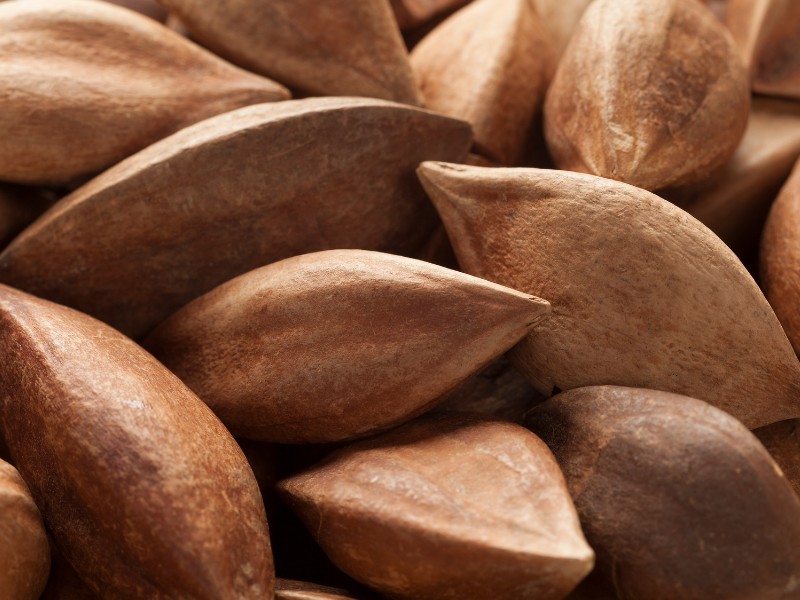
Top Restaurants In Bicol, Luzon, Philippines
From quaint eateries serving traditional home-cooked meals to upscale restaurants offering modern takes on Bicolano favorites. Here’s a list of top restaurants where you can savor the authentic flavors of Bicol.
1. Small Talk Café, Legazpi City
- Nestled in the heart of Legazpi, Small Talk Café offers a cozy ambiance where traditional Bicolano dishes meet contemporary culinary techniques. Famous for their Pasta Mayon, a spicy pasta dish named after the iconic Mayon Volcano, and their version of Bicol Express, this café is a must-visit for foodies looking to explore Bicol’s unique flavors.
2. 1st Colonial Grill, Various Locations
- Known for introducing the iconic Sili Ice Cream, 1st Colonial Grill is a culinary institution in Bicol with branches in Legazpi, Naga, and Daraga. Their menu boasts a wide array of Bicolano specialties, including Tinapa Rice and Tinutungan na Manok. The adventurous can sample their various chili ice cream flavors, ranging from mildly spicy to tear-inducingly hot.
3. Waway’s, Legazpi City
- Waway’s offers a homey dining experience with a menu that features Bicol’s traditional dishes, including a heartwarming Laing and a rich, creamy Kinunot. The restaurant’s rustic décor and friendly staff make dining here feel like a meal in a Bicolano home, complete with the warmth and hospitality the region is known for.
4. Balay Cena Una, Daraga
- Set in a beautifully restored ancestral house, Balay Cena Una combines history, culture, and gastronomy. Their menu offers a sophisticated twist on regional classics, set against the backdrop of Daraga’s colonial charm. Diners can indulge in their sumptuous Bicol Express and Laing while soaking in the ambiance of old-world Bicol.
5. Chef Doy’s Gourmet Restaurant, Naga City
- For a fine dining experience in Naga City, Chef Doy’s stands out with its elegantly prepared Bicolano cuisine, emphasizing fresh, local ingredients. The restaurant is particularly celebrated for its seafood dishes and inventive desserts, providing a gastronomic journey through Bicol’s culinary treasures in a refined setting.
6. Bob Marlin Restaurant and Grill, Naga City
- A favorite among locals and tourists alike, Bob Marlin Restaurant and Grill is famous for its crispy pata (deep-fried pork leg) and spicy dishes that embody the Bicolano love for heat. The casual, lively atmosphere, complete with reggae music, makes for a relaxed dining experience where guests can enjoy hearty Bicolano meals.
7. Geewan, Various Locations
- With branches across Bicol, Geewan serves traditional Filipino and Bicolano dishes in a fast-casual setting, perfect for travelers on the go. Their Pinangat and Bicol Express are standout dishes, offering authentic flavors at reasonable prices. Geewan is a great option for sampling a variety of Bicolano dishes without breaking the bank.
8. Red Platter, Naga City
- Red Platter is a restaurant that elegantly presents Bicolano cuisine along with Filipino and international dishes. Their chic interior and attentive service provide a delightful dining experience. The restaurant is particularly praised for its Bicol Express, seafood platter, and sinigang na hipon (sour shrimp soup).
9. Kusina ni Maria, Legazpi City
- A hidden gem in Legazpi, Kusina ni Maria offers a menu that’s a tribute to Bicolano home cooking. The restaurant’s specialty, Laing Pizza, is a creative fusion that’s become a crowd favorite, alongside their traditional Bicolano dishes that taste like they’re straight out of a local’s kitchen.
10. Bigg’s Diner, Various Locations
- As the largest food chain in Bicol, Bigg’s Diner offers an American retro-themed ambiance while serving a mix of American and Bicolano comfort food. Known for their tender baby back ribs and crispy fried chicken, Bigg’s also adds a local twist with dishes like Laing and Bicol Express pasta.
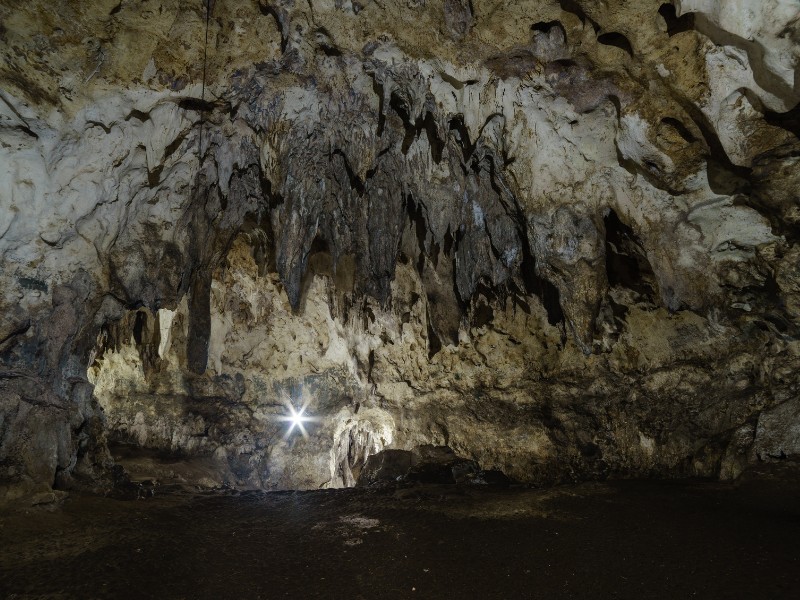
Tours For Visitors To Bicol, Luzon, Philippines
Here’s a list of tours that cater to a variety of interests, ensuring visitors can fully appreciate the beauty and diversity of Bicol.
1. Mayon Volcano ATV Adventure
- Experience the thrill of navigating the rugged terrains surrounding the iconic Mayon Volcano on an ATV. This tour offers a unique and exhilarating way to get up close to the world’s most perfect cone volcano, with routes that accommodate beginners to advanced riders, including a visit to the lava front and cinder cone.
2. Whale Shark Interaction in Donsol
- Swim with the gentle giants of the sea in Donsol, one of the best places in the world for whale shark interaction. This eco-friendly tour allows visitors to snorkel alongside these magnificent creatures in their natural habitat, guided by principles that ensure the safety and respect of the whale sharks.
3. Caramoan Island Hopping
- Explore the hidden gems of the Caramoan Islands, known for their powdery white sands, towering limestone cliffs, and crystal-clear waters. Island hopping tours take visitors to secluded beaches and hidden lagoons, offering opportunities for snorkeling, kayaking, and simply soaking up the sun in a tropical paradise.
4. Firefly Watching in Ocampo
- Embark on a magical evening boat tour in the Ocampo River, where you can witness thousands of fireflies illuminating the mangrove trees. This enchanting experience highlights the natural beauty and ecological significance of Bicol’s mangrove ecosystems, creating a memorable spectacle.
5. Bicol Heritage Tour
- Delve into Bicol’s rich history and cultural heritage with a tour that takes you through its ancient churches, historical landmarks, and traditional crafts. Highlights include the baroque-style Naga Metropolitan Cathedral, the Cagsawa Ruins with Mayon Volcano in the backdrop, and a visit to a traditional pili nut factory.
6. Bicol Culinary Tour
- Savor the flavors of Bicol with a culinary tour that introduces visitors to the region’s spicy and coconut-rich cuisine. From tasting the famous Bicol Express to trying the unique sili (chili) ice cream and participating in a pili nut cooking class, this tour is a feast for the senses.
7. Albay’s Quintessential Experience
- Discover Albay’s top attractions with a tour that combines natural, historical, and cultural sites. Visit the Daraga Church, embark on a city tour of Legazpi, and explore the Japanese tunnel used during World War II, all while enjoying panoramic views of Mayon Volcano.
8. Legazpi City Tour
- Get to know the capital city of Albay with a comprehensive tour that covers its major landmarks, including the Legazpi Boulevard for scenic seaside views, the Legazpi City Museum for a dose of local history, and the Lignon Hill Nature Park for adventure activities and Mayon Volcano vistas.
9. Eco-Adventure Tour in Camarines Sur
- For the adventurous at heart, Camarines Sur offers eco-adventure tours that include wakeboarding in the CamSur Watersports Complex, trekking and zip-lining at Mount Isarog National Park, and experiencing the tranquility of Lake Buhi, home to the smallest commercially harvested fish, the sinarapan.
10. Sorsogon’s Natural and Cultural Tour
- Explore the diverse attractions of Sorsogon with a tour that includes snorkeling in the crystal-clear waters of Matnog to see colorful corals and marine life, visiting the Barcelona Church made from coral stones, and experiencing the traditional way of life in a Bicolano village.
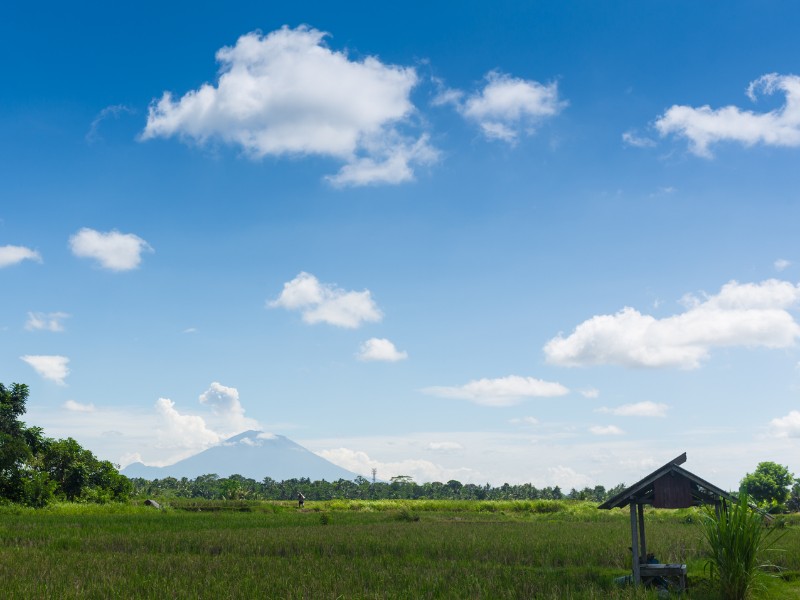
Bicol Accommodations Guide: Hotels, Guesthouses and Hostels
From luxurious hotels that promise comfort and elegance to cozy guesthouses and budget-friendly hostels that offer a warm welcome, here’s a comprehensive guide to staying in Bicol.
Luxurious Retreats
1. Misibis Bay Resort, Cagraray Island
- Nestled on the private island of Cagraray, Misibis Bay Resort is a luxurious getaway offering exclusive beach access, water sports facilities, and villas with direct pool access. It’s perfect for travelers seeking a blend of adventure and relaxation in a picturesque setting.
2. The Oriental Legazpi, Legazpi City
- Overlooking the Mayon Volcano, The Oriental Legazpi provides stunning views, modern amenities, and top-notch service. Its infinity pool and spa services make it a haven for relaxation after a day of exploring the city and its surrounding natural wonders.
Charming Mid-Range Options
3. Hotel St. Ellis, Legazpi City
- Situated in the heart of Legazpi, Hotel St. Ellis offers comfortable rooms, a refreshing outdoor pool, and easy access to the city’s attractions. The hotel’s blend of convenience and comfort makes it ideal for both leisure and business travelers.
4. Tugawe Cove Resort, Caramoan
- Accessible only by boat, Tugawe Cove Resort is a hidden gem in the Caramoan Peninsula, offering hilltop cottages with panoramic ocean views, a private beach, and an infinity pool. It’s a slice of paradise for those looking to escape the hustle and bustle of daily life.
Budget-Friendly Hostels and Guesthouses
5. Mayon Backpackers Hostel, Legazpi City
- A favorite among backpackers, Mayon Backpackers Hostel provides a cozy and sociable environment, with dormitory-style and private rooms. It’s an excellent base for exploring the region without breaking the bank.
6. Sleep-Easy Caramoan Accommodation, Caramoan
- Offering simple, clean accommodations, Sleep-Easy Caramoan Accommodation is perfect for budget travelers visiting the stunning Caramoan Islands. Its friendly atmosphere and helpful staff ensure a pleasant stay.
Unique and Boutique
7. Balai Tinay Guesthouse, Legazpi City
- This boutique guesthouse in Legazpi City charms visitors with its unique decor, warm hospitality, and a homey feel. Balai Tinay offers a quiet retreat with easy access to local attractions, making it perfect for travelers seeking a more personalized experience.
8. AguLuz Homestay, Donsol
- For those looking to swim with whale sharks in Donsol, AguLuz Homestay provides a comfortable and welcoming base. This family-run homestay is known for its delicious home-cooked meals and helpful tips on local activities.
Eco-Friendly and Sustainable
9. EcoVillage, Camarines Sur
- Nestled in the heart of Camarines Sur, EcoVillage is not just an accommodation but a sustainable community project. It offers eco-friendly lodges and the opportunity to engage with local conservation efforts, perfect for eco-conscious travelers.
10. Siama Hotel, Sorsogon
- Combining modern design with sustainable practices, Siama Hotel is a boutique hotel set amidst a coconut plantation. It offers a serene escape with its minimalist rooms, outdoor pool, and focus on nature.
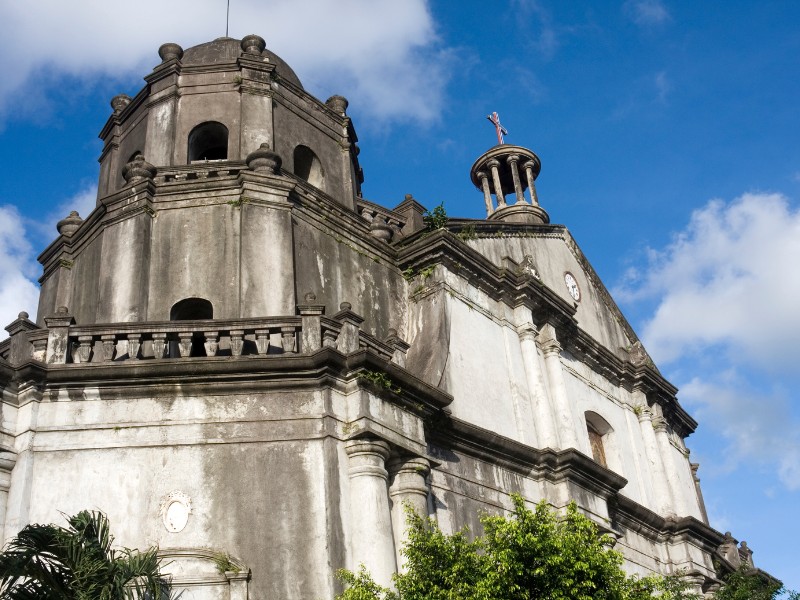
Day Trips From Bicol, Luzon, Philippines
Here’s a curated list of day trips from Bicol, each offering a unique blend of natural beauty, adventure, and cultural enrichment.
1. Swimming with Whale Sharks in Donsol
- Donsol, in the province of Sorsogon, is known as the “Whale Shark Capital of the World,” offering visitors the chance to swim with these gentle giants in their natural habitat. This eco-friendly adventure emphasizes respect and conservation, providing an unforgettable experience with the largest fish in the sea. The best time to visit is between November and June when whale sharks are most commonly seen. After the encounter, you can enjoy a quiet sunset on Donsol’s beaches.
2. Visiting Cagsawa Ruins in Daraga
- The Cagsawa Ruins, with the majestic Mayon Volcano in the background, are a poignant reminder of the region’s volcanic activity. Here, visitors can explore the remains of a 16th-century church buried by the 1814 eruption of Mayon Volcano. The site also offers a perfect vantage point for photography enthusiasts. Local vendors around the ruins sell local crafts and delicacies, offering a taste of Bicolano culture.
3. Island Hopping in Matnog, Sorsogon
- Matnog’s crystal-clear waters and untouched islands are a paradise for beach lovers and snorkelers. The island hopping tour includes visits to Subic Beach, known for its pink sand, and the Juag Lagoon Marine Sanctuary, where you can interact with a variety of marine life. Calintaan Cave’s hidden beach offers a secluded spot for relaxation. These tours provide not just a day of adventure but also an opportunity to support local eco-tourism.
4. Trekking to Mount Isarog National Park
- Mount Isarog serves as a natural haven for trekkers and nature enthusiasts, with its lush rainforest, hidden waterfalls, and diverse wildlife. The park offers various trails, including a challenging trek to Malabsay Falls, where you can enjoy a refreshing swim. The panoramic views of the Bicol peninsula from higher elevations are breathtaking. Along the way, keep an eye out for rare bird species and other wildlife endemic to the area.
5. Exploring the Heritage City of Naga
- Naga City, the heart of Bicol’s religious and cultural heritage, is home to the Peñafrancia Basilica Minore and the historic Naga Metropolitan Cathedral. A leisurely walk along the city’s old streets reveals a mix of colonial architecture and modern Filipino life. The city’s vibrant food scene offers a taste of Bicolano flavors, from spicy Bicol Express to sweet pili nut desserts. Naga’s lively festivals and markets make it a dynamic destination year-round.
6. Relaxing at Misibis Bay Resort
- For a luxurious day of relaxation, Misibis Bay Resort on Cagraray Island offers day passes to non-staying guests. The resort features a private beach, water sports facilities, and a spa. Adventure seekers can enjoy activities like ATV tours, zip-lining, or stand-up paddleboarding. It’s a perfect retreat for those looking to indulge in luxury amidst natural beauty.
7. Venturing to the Atulayan Island
- Atulayan Island, accessible from Sagñay, Camarines Sur, is an unspoiled gem with clear turquoise waters and powdery white sand beaches. The island has no permanent residents, making it an ideal spot for a secluded beach day. Snorkeling and swimming in its crystal-clear waters reveal vibrant marine life. Remember to bring your own food and water, as the island has limited facilities.
8. Visiting the Quitinday Green Hills Formation Reserve
- Resembling the famous Chocolate Hills of Bohol, the Quitinday Green Hills in Albay offer a unique natural attraction less known to tourists. A moderate hike leads to viewing decks that offer stunning panoramic views of the verdant, cone-shaped hills. The area is also ideal for bird watching and enjoying the serenity of the countryside. The reserve is a testament to the geological diversity of the Bicol region.
9. Snorkeling and Diving in Ticao Island
- Ticao Island, part of Masbate province, is gaining recognition for its rich marine life, making it a prime spot for snorkeling and diving. The Manta Bowl shoal is a popular site for spotting manta rays and other pelagic fish. The island’s pristine coral reefs are home to a colorful array of marine biodiversity. Dive operators offer day trips from the Bicol mainland, providing equipment and guides.
10. Exploring the Lagonoy Gulf
- The Lagonoy Gulf offers a scenic coastal escape, with opportunities for island hopping, diving, and fishing. Its remote beaches and untouched islands, such as Cotivas and Manlawi, boast fine white sand and clear waters. The gulf’s rich marine ecosystem is perfect for those interested in marine conservation and sustainable tourism practices. Local communities benefit from the guided tours, offering a chance to learn about the local way of life.
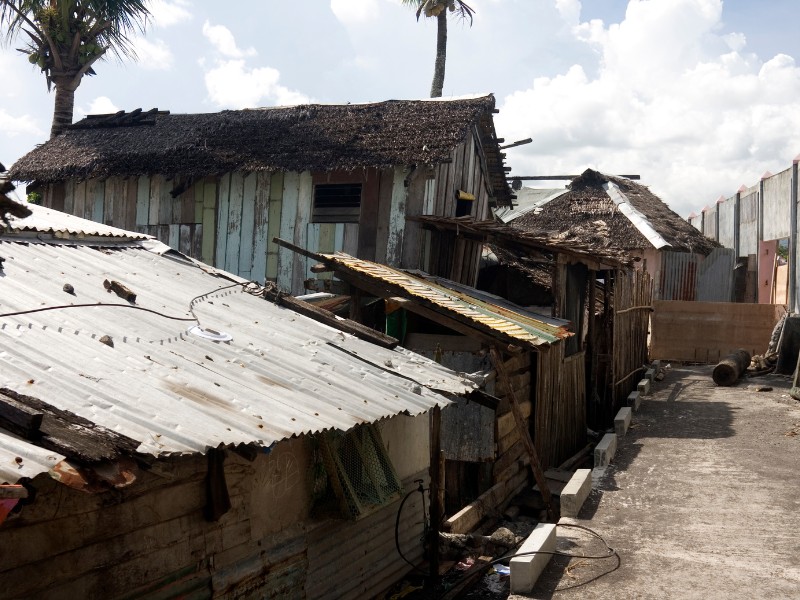
Bicol Transportation Guide
Here’s a thorough travel guide to getting around Bicol and making the most of your visit to this vibrant region.
By Air
1. Airports Serving Bicol
- Bicol is accessible by air via several airports, including Legazpi City Airport in Albay, Naga Airport in Camarines Sur, and Virac Airport in Catanduanes. These airports host flights from major cities like Manila, providing a quick and convenient way to reach the region.
By Land
2. Bus Services
- Bicol is well-connected to Manila and other parts of Luzon by a network of bus companies offering daily services. Buses such as Philtranco, DLTB, and RSL offer trips to various Bicol destinations, including direct routes to Legazpi, Naga, and Sorsogon. Overnight buses are available for long-distance travel.
3. Private Car
- Traveling by private car offers flexibility and the opportunity to enjoy Bicol’s scenic routes at your own pace. The Andaya Highway and the Maharlika Highway are the main routes connecting Bicol to Manila and the rest of Luzon. Car rental services are available in major cities and airports.
4. Jeepneys and Tricycles
- For short distances within towns and cities, jeepneys and tricycles are ubiquitous and affordable options. They are ideal for reaching local attractions, beaches, and remote areas not served by buses. Fares are minimal, making them popular among budget travelers.
5. Vans for Hire (V-Hire)
- Vans for hire, or V-Hires, offer shared and private travel options between major towns and tourist spots. They provide a balance between cost and comfort, with faster travel times than buses. V-Hire terminals are found in major transport hubs and shopping malls.
By Sea
6. Ferries and Fast Crafts
- Bicol’s islands, such as Catanduanes and Masbate, are accessible by ferry services from ports in Albay and Sorsogon. Fast craft services offer quicker travel times. Montenegro Lines, FastCat, and other local operators provide regular schedules.
By Rail
7. Bicol Express Train Service (Currently Suspended)
- The Philippine National Railways (PNR) previously offered the Bicol Express train service connecting Manila to Naga City, a scenic route that passes through rural landscapes. While this service is currently suspended, there are plans for its revival, which would offer an alternative and scenic way to travel to Bicol.
Travel Tips
- Plan Ahead: Especially during peak seasons like summer and holidays, it’s wise to book tickets in advance as transportation options can get fully booked.
- Local Guidance: For remote attractions, consider hiring local guides or asking for directions at your accommodation. Navigating rural areas can be challenging without local knowledge.
- Stay Informed: Check for updates on travel advisories, especially during the typhoon season, as Bicol is prone to weather disturbances.
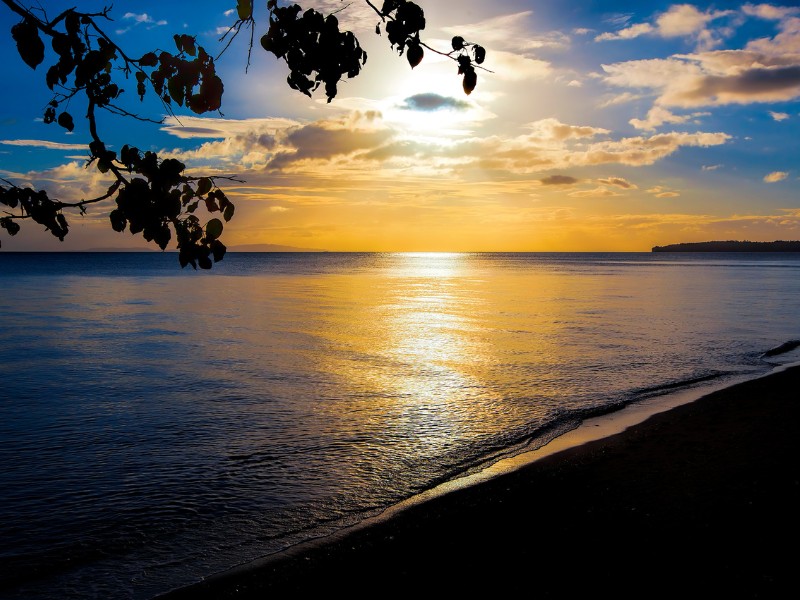
Where To Visit After Your Trip To Bicol?
Here’s a list of places to consider visiting after your adventure in Bicol, ensuring the continuation of your journey through the diverse landscapes and cultures of the Philippines.
1. Manila
- The capital city of the Philippines, Manila, is a bustling metropolis rich in history and culture. Intramuros, the historic walled city, offers a glimpse into the country’s colonial past, while modern shopping malls and dining options showcase its contemporary side. The National Museum of the Philippines provides insightful exhibitions on Filipino heritage and arts. Manila is a vibrant starting point for exploring the northern regions of Luzon.
2. Palawan
- Often dubbed the last frontier of the Philippines, Palawan is a paradise of pristine beaches, clear blue waters, and stunning limestone cliffs. El Nido and Coron are popular for their island-hopping tours, which reveal hidden lagoons and underwater wonders. The Puerto Princesa Subterranean River National Park, a UNESCO World Heritage site, offers boat tours through its impressive limestone cave system. Palawan is perfect for nature lovers seeking tranquility and adventure.
3. Boracay
- Known for its powdery white sands and vibrant nightlife, Boracay has long been a favorite among beachgoers. Following a rehabilitation period, the island now boasts a cleaner and more sustainable environment, making it a must-visit destination for those looking to enjoy water sports, sunbathing, and island vibes. The iconic White Beach offers stunning sunsets that are not to be missed. Boracay remains a symbol of the Philippines’ commitment to preserving its natural beauty.
4. Cebu
- Cebu is a dynamic island province that blends urban sophistication with natural beauty. The city of Cebu, the oldest city in the Philippines, is home to the Basilica Minore del Santo Niño and the historic Magellan’s Cross. Beyond the city, the island offers incredible diving spots, waterfalls, and the picturesque hills of Oslob, where you can swim with whale sharks. Cebu’s culinary scene, featuring the famous Cebuano lechon, is also worth exploring.
5. Siargao
- Siargao, the surfing capital of the Philippines, attracts surfers and travelers with its laid-back vibe and stunning seascapes. Beyond surfing, the island offers lagoons, caves, and unique formations like the Magpupungko Rock Pools. The island is also a gateway to exploring nearby islands such as Daku, Guyam, and Naked Island. Siargao is ideal for those seeking an off-the-beaten-path adventure with a touch of paradise.
6. Bohol
- Bohol is known for its Chocolate Hills, over 1,200 symmetrical mounds that turn brown in the dry season, and the endangered Philippine tarsier, one of the smallest primates in the world. The island also offers beautiful beaches, river cruises on the Loboc River, and heritage sites like the Baclayon Church. Bohol’s mix of natural and cultural attractions makes it a compelling post-Bicol destination. Adventure activities like ziplining and ATV rides add to the island’s appeal.
7. Baguio
- The summer capital of the Philippines, Baguio, sits amidst the cool climes of the Cordillera Mountains. Known for its pine trees, parks, and vibrant arts scene, Baguio is a welcome retreat from the tropical heat. The city’s markets are a great place to shop for fresh produce and woven crafts. Baguio’s Panagbenga Festival, a month-long flower festival, transforms the city into a colorful spectacle each February.
8. Batanes
- Batanes, the northernmost province of the Philippines, is a tranquil haven of rolling hills, traditional stone houses, and dramatic cliffs against the backdrop of the vast Pacific Ocean. Its isolation has preserved the unique Ivatan culture and the natural beauty of the islands. Activities like biking, hiking, and cultural tours offer intimate experiences of this idyllic destination. Batanes is for those seeking peace, natural beauty, and a deep sense of history.
9. Vigan
- Vigan, a UNESCO World Heritage site in Ilocos Sur, is known for its preserved Spanish colonial and Asian architecture. Calle Crisologo, the city’s famous cobblestone street, transports visitors back in time with its heritage houses, calesas (horse-drawn carriages), and antique shops. Local delicacies like empanada and bagnet highlight the region’s culinary heritage. Vigan’s blend of history, culture, and cuisine offers a unique journey into the past.
10. Mindoro
- Mindoro offers diverse attractions, from the vibrant coral reefs of Apo Reef Natural Park, a paradise for divers, to the indigenous Mangyan villages that showcase the island’s cultural heritage. The island’s beaches, particularly those in Puerto Galera, are perfect for relaxation and water sports. Mindoro’s interior is a haven for trekkers, with untouched natural parks and mountains. This island is a great choice for travelers looking to experience the Philippines’ natural and cultural diversity.
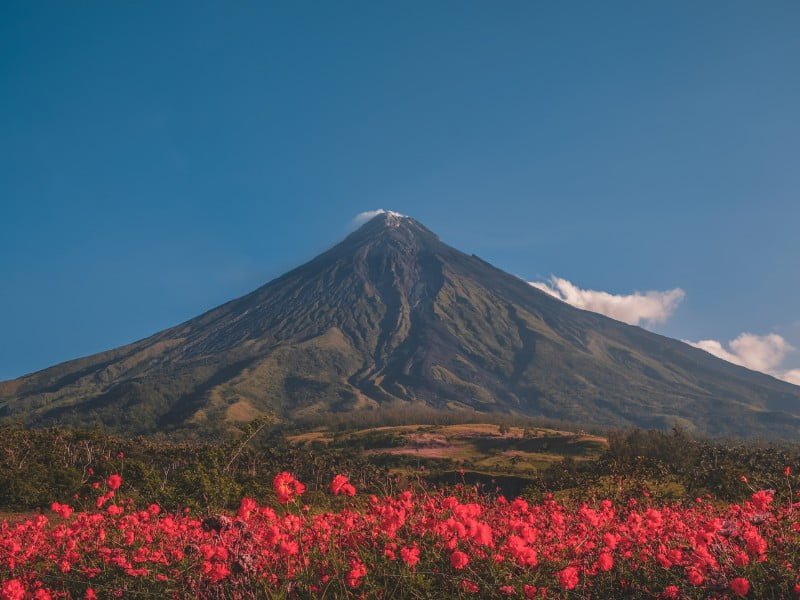
Essential Questions About Visiting Bicol, Philippines: Expert Travel Answers & Local Tips
How many days do you really need to explore Bicol properly?
It depends. For a quick overview, three to four days is enough to see Mayon Volcano, Donsol’s whale sharks, and a taste of Bicolano cuisine. But if you want to explore Caramoan Islands, hike Mount Isarog, and enjoy several beaches, plan for at least seven days. The region is large and travel between provinces can take time due to winding mountain and coastal roads.
What’s the best time of year to visit Bicol?
The best time to visit is from December to May. These months bring sunny weather ideal for beach trips, outdoor adventures, and whale shark encounters in Donsol. June to November marks the typhoon season, which can bring heavy rain and travel disruptions, though it’s also when landscapes are lushest and prices lower.
Is it safe to travel around Bicol?
Yes. Bicol is generally safe for tourists, including solo travelers and families. The biggest risks are weather-related—typhoons or volcanic alerts around Mayon. Keep an eye on PAGASA (the Philippine weather agency) updates and respect safety zones near active volcanoes. Petty theft can occur, so take standard precautions like avoiding leaving valuables unattended on beaches.
How do I get to Bicol from Manila?
You’ve got options. The quickest way is a one-hour flight to Legazpi City or Naga City. Overland, comfortable sleeper buses take about 10–12 hours overnight. For those who enjoy slow travel, self-driving along the Maharlika Highway is scenic and allows side trips to smaller towns. The old Bicol Express train line is being revived, but it’s not yet operational.
What’s the best base for exploring Bicol?
Legazpi City makes an excellent base, especially for visiting Mayon Volcano, Cagsawa Ruins, and nearby beaches. Naga City is ideal for festivals, history, and access to Mount Isarog. For beach lovers, Sorsogon (near Donsol) or Caramoan is better. Each offers a different slice of Bicol life—urban comfort, cultural immersion, or coastal adventure.
Can you climb Mount Mayon?
Technically, yes—but only when conditions allow. Mayon is an active volcano, and climbs are often restricted due to volcanic activity. When open, local guides are mandatory, and multi-day treks are physically demanding. Most visitors prefer ATV rides or hikes around the foothills for stunning views without the risk.
What are must-try Bicolano dishes?
Definitely sample Bicol Express, Laing, and Pinangat—all rich in coconut milk and chili. Try Sili ice cream for something adventurous, and don’t leave without tasting pili nuts, a buttery snack unique to the region. Local restaurants like Small Talk Café or 1st Colonial Grill in Legazpi are top spots for authentic flavors.
Is swimming with whale sharks in Donsol ethical?
Yes, compared to other places. Donsol’s whale shark tourism is tightly regulated by WWF and local authorities. Only snorkeling is allowed (no scuba diving), and a strict “no touching, no feeding” rule protects the animals. Visit between November and June for the best chance of sightings.
What’s the best way to get around within Bicol?
For city travel, jeepneys and tricycles are cheap and everywhere. For longer hops between provinces, vans-for-hire (V-Hires) and buses are reliable. Renting a private car or hiring a driver is great if you’re short on time or traveling in a group. Roads are generally good, but expect occasional potholes in rural areas.
What’s a realistic budget for traveling Bicol?
Budget travelers can get by on around $30–40 USD per day including lodging, meals, and transportation. Mid-range travelers should expect $70–100 per day, especially if taking guided tours or staying in boutique hotels. Luxury stays like Misibis Bay can easily run $200+ a night but deliver world-class amenities.
Are there ATMs and good internet coverage in Bicol?
Yes, in most cities and towns like Legazpi, Naga, and Sorsogon. However, smaller islands like Caramoan and Calaguas often lack ATMs, so bring cash. Mobile internet (Globe and Smart) works decently in populated areas but can be patchy in mountains and remote coasts—download maps ahead of time.
Is Bicol good for families and kids?
Absolutely. Families love Donsol’s whale shark tours, Legazpi’s adventure parks, and Bicol’s calm beaches. Some treks and volcano climbs may be too strenuous for young children, but there are plenty of kid-friendly attractions, including the CamSur Watersports Complex and eco-tours at Sumlang Lake.
What should I pack for a trip to Bicol?
Pack light, breathable clothing, a rain jacket, reef-safe sunscreen, insect repellent, and sturdy sandals or water shoes. Bring motion sickness tablets for island-hopping and waterproof bags for your electronics—sudden downpours are common. If visiting volcanoes or caves, hiking shoes are a must.
How spicy is the food really?
Hot. Bicolanos love chili, and “mild” dishes might still surprise you. If you’re not a fan of spice, ask for “hindi maanghang” (not spicy) when ordering. Many restaurants can adjust heat levels, but true Bicolano food proudly brings the burn.
Are there festivals worth planning a trip around?
Yes! The Peñafrancia Festival in Naga City every September is one of the Philippines’ biggest religious celebrations, while the Ibalong Festival in Legazpi highlights Bicol’s ancient myths. Both feature processions, music, food, and a joyful community vibe worth experiencing.
What’s something unique about Bicol most tourists miss?
Many skip Quitinday Green Hills, which look like a lush twin of Bohol’s Chocolate Hills but with far fewer visitors. Others overlook Tiwi’s hot springs, perfect for a relaxing soak after days of exploring. Bicol is full of lesser-known spots that rival the country’s famous destinations—just with fewer crowds.
Bicol Travel Guide: Final Thoughts
As our journey through the Bicol region draws to a close, we are left with memories as vibrant as the hues of Mayon Volcano at sunset and as warm as a bowl of spicy Bicol Express. Bicol, with its perfect blend of natural wonders, rich cultural heritage, and culinary mastery, has offered us an adventure that tantalizes all senses. From the adrenaline rush of close encounters with the gentle giants of Donsol to the serene moments on the powdery beaches of Caramoan, each experience in Bicol has been a testament to the region’s unparalleled beauty and spirit. Let’s reflect on the highlights of our journey and the impressions that will linger long after we’ve left.
The Majesty of Mayon
An Iconic Beacon
The perfect cone of Mayon Volcano has stood as a silent guardian over Bicol, embodying the region’s resilience and natural majesty. Its presence has been a constant backdrop to our adventures, reminding us of the earth’s power and beauty. Climbing its slopes or simply admiring it from afar, Mayon has etched itself into the heart of every traveler who has witnessed its splendor.
A Culinary Adventure
The Heat of Bicolano Cuisine
Bicol has taken us on a culinary journey that challenges and delights in equal measure. The spicy symphony of flavors found in dishes like Bicol Express and Laing has introduced us to the soul of Bicolano cuisine, where every bite is a bold declaration of love for chili and coconut milk. The daring sili ice cream has been a surprising and refreshing testament to the region’s inventive spirit.
Embracing Nature and Culture
A Rich Tapestry
From the mystical whale sharks of Donsol to the serene, untouched beauty of the Caramoan Islands, Bicol’s natural wonders have offered us moments of awe and introspection. The region’s vibrant festivals, historic churches, and warm, welcoming people have woven a rich cultural tapestry that tells the story of a community deeply connected to its land and traditions.
Parting Words
As we bid farewell to Bicol, we carry with us a mosaic of experiences that together form a vivid portrait of this enchanting region. Bicol has been more than just a destination; it has been a journey of discovery, a challenge to our senses, and a warm embrace of Philippine hospitality. The fire of its volcanoes and the spice of its cuisine have ignited a flame within us, a burning desire to return and explore even deeper the beauty that lies in Bicol’s heart.
Bicol leaves us not just with photographs and souvenirs, but with cherished memories and stories to tell, reminding us that travel is not just about the places we visit but the experiences we collect and the parts of ourselves we discover along the way. Farewell, Bicol, until we meet again, under the shadow of Mayon, by the azure waters of your shores, in the warmth of your people’s smiles.
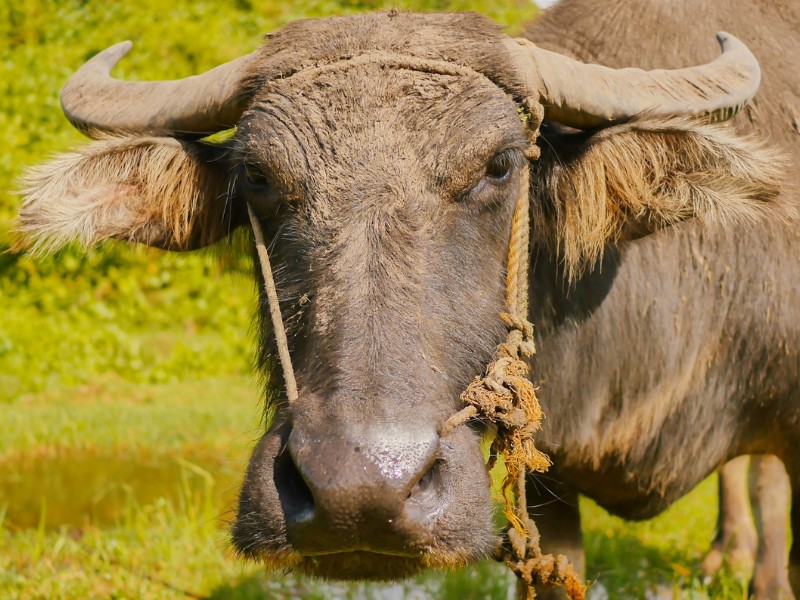
An Ode To Bicol
In Bicol’s land, where wonders lie, A traveler’s heart begins to fly. With Mayon’s beauty, towering high, And pristine beaches, where waves sigh.
Through verdant hills, the trails unwind, In search of adventures, one can find. From Caramoan’s isles, serene and bright, To Donsol’s seas, where whale sharks delight.
Taste the flavors that Bicol holds, Bicol Express, a story unfolds. Laing and pinangat, rich and bold, Spicy delights, to warm your soul.
The warmth of people, their smiles so true, Welcoming travelers, as they pass through. From Legazpi’s charm to Naga’s grace, Bicol’s embrace, a treasured embrace.
Oh, Bicol, a land of dreams, Where nature’s beauty truly gleams. With every step, a story unfolds, In Bicol’s heart, memories to behold.
So wander freely, let your spirit roam, Discover Bicol’s wonders, make it your home. With every journey, let your heart be stirred, For in Bicol’s embrace, you’ll find your word.
